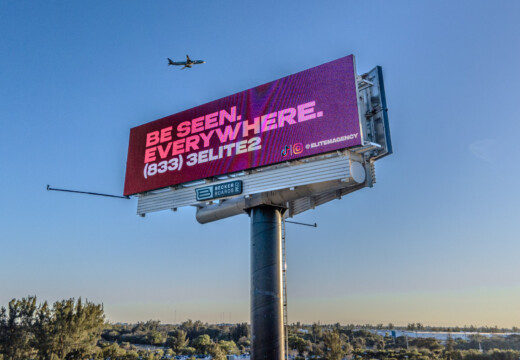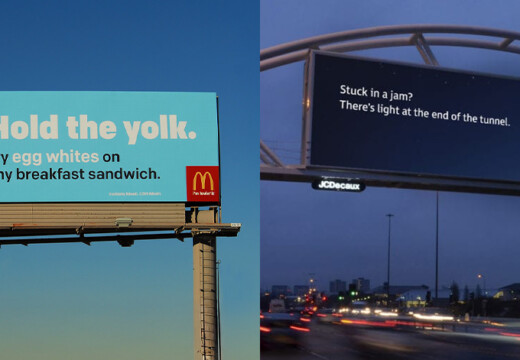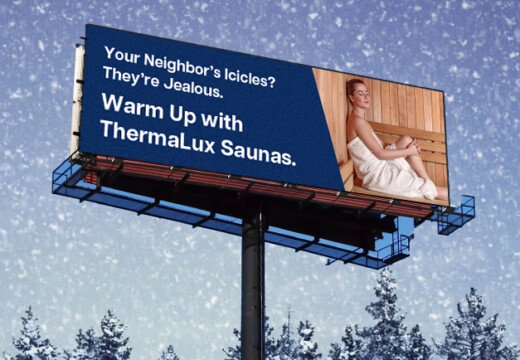Billboards are a powerful way to reach Gen Z. Why? This generation blends physical and digital habits, making outdoor ads highly effective. Here’s what works:
- Quick impact: Messages need to grab attention in 3 seconds or less.
- Digital billboards: 63% of Gen Z prefers dynamic displays over static ones.
- Social values: 76% distrust brands that avoid taking a stance on key issues.
- Interactivity: 92% of Gen Z engages with QR codes on billboards.
- Smart placement: Focus on campuses, transit hubs, and events they frequent.
For example, Chipotle’s QR code billboard in 2024 led to 12,000 social media posts in 72 hours. Tools like Blip enable real-time updates, while features like AR can boost engagement by 156%. With the right design, tech, and location, billboards can drive both online and offline results.
WHY OUT-OF-HOME ADVERTISING THRIVES IN TODAY’S MEDIA LANDSCAPE? | ANC
Gen Z Media Habits and Preferences
To connect with Gen Z through billboard advertising, it’s essential to match their fast-paced content consumption and focus on values. This generation gravitates toward bold, eye-catching visuals in public spaces. Let’s dive into design strategies that align with their preferences for quick, impactful content and social awareness.
3-Second Messages: Quick Impact Design
Getting Gen Z’s attention in just 3 seconds means your message needs to be clear and to the point. Digital billboards work best when they use simple layouts and dynamic visuals. Chris Leslie, Founder of Leslie Lightcraft Co, puts it this way:
“It’s not a social media thing that you see on your phone. It’s not word-of-mouth. It’s big and bold and out there in public. I would say this is the first step of looking big and public”
Incorporating motion graphics or time-sensitive elements can make your billboard stand out and leave a lasting impression.
Social Values in Billboard Design
Gen Z places high importance on authenticity and social responsibility. To connect with them, billboard campaigns should reflect genuine support for causes they care about. This can include:
- Using diverse and inclusive imagery
- Highlighting eco-friendly practices
- Showcasing involvement in local communities
- Addressing issues that resonate with the local audience
Social Media Style Billboards
Pairing concise messages with a nod to social values is a strong start, but taking inspiration from social media design can make your billboard even more engaging. Borrowing visual cues from platforms Gen Z loves – like vertical video formats, emojis, hashtags, or user-generated content styles – can create a sense of familiarity. Kimberly Pinkson, Owner of Pretty In Pinkston, highlights this approach:
“Blip works for us. It’s a different medium, and it brings a lot of exposure. It sets us apart and boosts exposure.”
By blending digital aesthetics with physical advertising, you can create billboards that resonate deeply with a younger audience, bridging the gap between online and offline worlds.
These strategies open the door to billboard designs that truly connect with Gen Z.
Billboard Design Elements for Gen Z
Color and Contrast Tips
Use bold, vibrant colors with high contrast to grab attention. Designs inspired by social media aesthetics – like dynamic gradients or glitch effects – connect well with Gen Z’s digital tastes. Keep visuals as the focus by dedicating 80% of the space to imagery, while limiting text to just 7 words for clarity and impact.
Connected Billboard Stories
Telling a story across multiple billboards keeps Gen Z interested. Campaigns with 3-5 connected boards along busy travel routes tend to perform better, showing a 27% increase in engagement rates. Keep the visuals consistent, revealing your message gradually to build curiosity. Platforms like Blip can help you strategically place billboards along commuter routes for maximum exposure.
QR Codes and Digital Links
Gen Z loves interactivity – 92% prefer billboards with QR codes. These codes act as a bridge between the physical and digital world, so their placement matters. For the best results:
- Position QR codes in the upper-right corner.
- Make them at least 5% of the ad space.
- Add clear instructions like “Scan to unlock.”
The most effective QR codes lead to exclusive content rather than generic web pages. For instance, a Gen Z voting campaign saw a 189% jump in scans when the QR codes linked to meme-style visuals instead of standard designs.
| QR Code Best Practices | Impact on Gen Z Engagement |
|---|---|
| Upper-right placement | 67% more scans |
| Limited-time offers | 32% higher scan rates |
| Exclusive content access | 89% completion rate |
Incorporate these strategies to connect with Gen Z through visually engaging and interactive billboard campaigns.
sbb-itb-2e2e93f
Tech Features for Gen Z Billboards
Timely Updates with Blip

Blip’s bidding system updates every 10 minutes, giving advertisers the flexibility to adjust their messages throughout the day. This means you can tailor your ads to match the time and audience – like targeting morning commuters with one message and evening viewers with another.
Adding Augmented Reality (AR)
AR can take billboard engagement to the next level by creating interactive experiences. Here’s how you can incorporate it:
- Use Snapchat’s Lens Studio to design location-based AR filters.
- Enable AR interactions when people point their phones at the billboard.
- Include clear visual cues on the billboard to highlight AR features.
Data shows AR-enabled billboards receive 156% more social media mentions than traditional ones, with users spending an average of 85 seconds interacting. Once you add AR, track its impact to see how it enhances your campaign.
Tools to Measure Performance
Understanding your campaign’s performance is critical, especially when targeting Gen Z. Blip’s analytics platform offers detailed data, including:
- Real-time impression counts
- Engagement breakdowns by time of day
- Location-based performance comparisons
- Monitoring of social media mentions
“Billboards are one of the most impactful ways to advertise, and with Blip, you spend a fraction of what you would end up paying elsewhere”, – Ray Bowens, Founder of Hashtag-Vape
Key metrics to watch include QR code scans for digital integration, hashtag usage for social impact, peak performance times for specific locations, and overall audience engagement. These insights help you refine your strategy and maximize your reach.
Location Planning for Gen Z
Strategic placement plays a key role in connecting with Gen Z at the right time. By combining smart location choices with the tech-driven design elements mentioned earlier, you can ensure your message resonates.
Campus and Youth Hotspots
College campuses and nearby areas are prime spots to grab Gen Z’s attention. Focus on:
- Main pathways leading to major universities
- Student housing areas with high foot traffic
- Shopping and entertainment zones popular with students
These spots are especially effective for digital billboard campaigns. To maximize impact, consider adding transit areas where Gen Z frequently spends time.
Transportation Hubs and Routes
Transportation is a big part of Gen Z’s daily routine, making these routes ideal for billboard placement:
- Bus stops and train stations
- Rideshare pickup and drop-off points
- Bike-sharing stations and popular cycling paths
- Busy intersections during commute hours
Event-Based Placements
Align your billboards with events that draw Gen Z. Some examples include:
- Music festivals
- Campus activities
- Community celebrations
- Seasonal shopping events
Digital billboards let you adapt quickly to event schedules and crowd movements, ensuring your message reaches Gen Z when they’re most engaged.
Conclusion: Gen Z Billboard Success Tips
To wrap up, successful billboard campaigns aimed at Gen Z combine smart use of technology, sharp design, and strategic placement. Here’s a quick breakdown of what works best.
Focus on Quick, Bold Messaging
Digital billboards boast a 55% message recall rate compared to just 23% for static ones. Keep your message short – 8 words max – and use bold, sans-serif fonts for readability in under 2 seconds. A great example? ThriftyThreads’ “Your Ex’s Sweater 50% Off” campaign, which nailed it with clever, punchy messaging.
Add Interactive Features
Campaigns using augmented reality (AR) see a 34% boost in social sharing. Take Burger King’s 2024 AR billboard in NYC, which racked up 450,000 scans in two weeks and drove a 19% spike in app downloads.
Strategic Placement and Timing
Placing billboards near college campuses or transit hubs during busy hours can improve effectiveness by 40%. Digital billboard platforms also let you update content in real time and adjust pricing dynamically.
| Success Factor | Impact Metric | Best Practice |
|---|---|---|
| Message Length | 1.7 sec view time | Keep it to 8 words max |
| QR Integration | 6–8% scan rate | Place CTA in top-right |
| Location Targeting | 40% engagement lift | Focus on campuses/transit |
| Content Updates | 23% higher engagement | Rotate content weekly |
Additionally, 78% of Gen Z consumers research brands after seeing outdoor ads. Make sure your campaigns align with their values and priorities. Platforms like Blip can help you stay agile with features like real-time bidding and detailed analytics to fine-tune your approach.
FAQs
How can brands create billboard campaigns that connect with Gen Z’s values and preferences?
To create billboard campaigns that resonate with Gen Z, brands should focus on aligning their messaging with this generation’s core values, such as inclusivity, sustainability, and authenticity. Use bold visuals, concise text, and creative designs that capture attention quickly, as Gen Z tends to have a shorter attention span due to their constant exposure to digital media.
It’s also important to leverage trends and cultural moments that matter to them. Highlight messages that reflect their interests, such as social justice, environmental responsibility, or individuality. Keep the tone relatable and genuine to build trust and engagement. Digital billboards, in particular, allow for flexibility and real-time updates, making it easier to experiment with creative approaches and stay relevant to Gen Z’s dynamic preferences.
How do features like QR codes and augmented reality (AR) make billboard ads more engaging for Gen Z?
Digital features like QR codes and augmented reality (AR) bring interactivity and personalization to billboard ads, which are highly appealing to Gen Z. QR codes allow viewers to instantly access more information, promotions, or exclusive content by simply scanning with their smartphones. This seamless integration between offline and online experiences aligns with Gen Z’s tech-savvy nature and preference for convenience.
Similarly, AR transforms static ads into immersive experiences, capturing attention and encouraging engagement. For example, AR can let users visualize products in their environment or unlock fun, shareable content. These features not only make billboard campaigns more memorable but also help brands connect with Gen Z on platforms they already love, like social media, where such interactive elements can be shared widely.
Why is choosing the right location important for billboard ads aimed at Gen Z, and which areas work best?
Strategic placement is key to connecting with Gen Z because this generation values experiences, authenticity, and relevance. To capture their attention, billboards should be placed in areas where they frequently spend time, such as near college campuses, shopping districts, entertainment hubs, and high-traffic urban areas.
Locations with heavy foot traffic and visibility, like busy intersections or areas near public transit, are especially effective. By meeting Gen Z where they are, your campaign has a better chance of resonating and creating a lasting impression.
Related posts
To create billboard campaigns that resonate with Gen Z, brands should focus on aligning their messaging with this generation's core values, such as inclusivity, sustainability, and authenticity. Use bold visuals, concise text, and creative designs that capture attention quickly, as Gen Z tends to have a shorter attention span due to their constant exposure to digital media.
\n
It's also important to leverage trends and cultural moments that matter to them. Highlight messages that reflect their interests, such as social justice, environmental responsibility, or individuality. Keep the tone relatable and genuine to build trust and engagement. Digital billboards, in particular, allow for flexibility and real-time updates, making it easier to experiment with creative approaches and stay relevant to Gen Z's dynamic preferences.
"}},{"@type":"Question","name":"How do features like QR codes and augmented reality (AR) make billboard ads more engaging for Gen Z?","acceptedAnswer":{"@type":"Answer","text":"
Digital features like QR codes and augmented reality (AR) bring interactivity and personalization to billboard ads, which are highly appealing to Gen Z. QR codes allow viewers to instantly access more information, promotions, or exclusive content by simply scanning with their smartphones. This seamless integration between offline and online experiences aligns with Gen Z's tech-savvy nature and preference for convenience.
\n
Similarly, AR transforms static ads into immersive experiences, capturing attention and encouraging engagement. For example, AR can let users visualize products in their environment or unlock fun, shareable content. These features not only make billboard campaigns more memorable but also help brands connect with Gen Z on platforms they already love, like social media, where such interactive elements can be shared widely.
"}},{"@type":"Question","name":"Why is choosing the right location important for billboard ads aimed at Gen Z, and which areas work best?","acceptedAnswer":{"@type":"Answer","text":"
Strategic placement is key to connecting with Gen Z because this generation values experiences, authenticity, and relevance. To capture their attention, billboards should be placed in areas where they frequently spend time, such as near college campuses, shopping districts, entertainment hubs, and high-traffic urban areas.
\n
Locations with heavy foot traffic and visibility, like busy intersections or areas near public transit, are especially effective. By meeting Gen Z where they are, your campaign has a better chance of resonating and creating a lasting impression.
"}}]}


